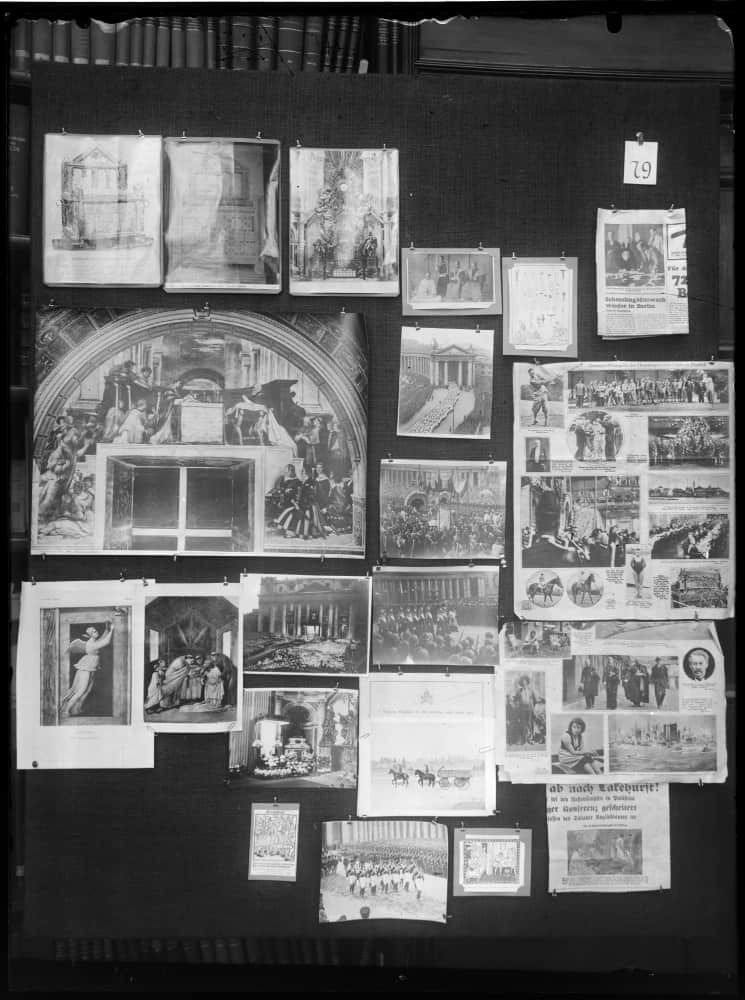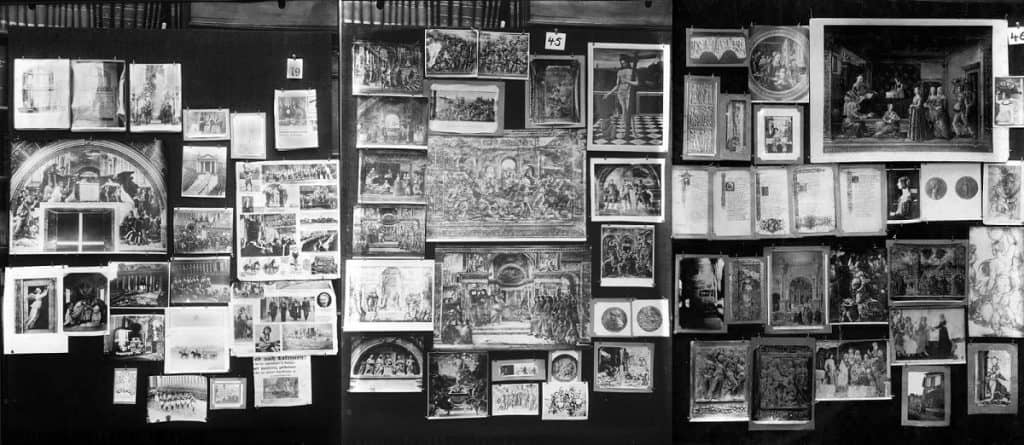Mnemosyne Atlas by Aby Warburg

In December 1927, German art historian and cultural theorist Aby Warburg started to compose a work in the form of a picture atlas named Mnemosyne. It consisted of 40 wooden panels covered with black cloth, on which were pinned nearly 1,000 pictures from books, magazines, newspaper and other daily life sources.[6] These pictures were arranged according to different themes:
- Coordinates of memory
- Astrology and mythology
- Archaeological models
- Migrations of the ancient gods
- Vehicles of tradition
- Irruption of antiquity
- Dionysiac formulae of emotions
- Nike and Fortuna
- From the Muses to Manet
- Dürer: the gods go North
- The age of Neptune
- “Art officiel” and the baroque
- Re-emergence of antiquity
- The classical tradition today[7]
There were no captions and only a few texts in the atlas. “Warburg certainly hoped that the beholder would respond with the same intensity to the images of passion or of suffering, of mental confusion or of serenity, as he had done in his work.”[6] Mnemosyne Atlas was left unfinished when Warburg died in 1929.

